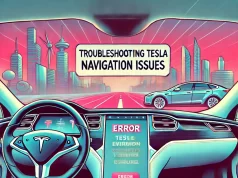Tesla, the electric car company founded by Elon Musk, has been developing and deploying a series of advanced driver-assistance systems that are marketed as Autopilot, Full Self-Driving (FSD), and FSD Beta.
These systems are designed to control braking, steering, and acceleration in certain circumstances, and to enable the car to navigate the roads with minimal human intervention.
Tesla claims that these systems make its cars safer and more efficient and that they will eventually lead to a fully autonomous future.
However, not everyone is convinced by Tesla’s vision. A growing number of crashes involving Tesla vehicles using Autopilot or other self-driving features have raised serious concerns about the safety and reliability of the technology.
According to a Washington Post analysis of National Highway Traffic Safety Administration (NHTSA) data, there have been 736 U.S. crashes since 2019 involving Teslas in Autopilot mode, resulting in 17 fatalities and five serious injuries.
The NHTSA initiated an investigation into Autopilot safety in 2021 after it identified a string of crashes in which Tesla vehicles using Autopilot had collided with stationary first responders’ vehicles and road work vehicles³.
Some of the most common causes of Tesla Autopilot crashes are:
Hitting stationary objects at high speed: When the Traffic-Aware Cruise Control (TACC) with Autosteer is engaged at freeway speeds, the Automatic Emergency Braking (AEB) is reduced to avoid false-positive sudden braking, which could cause more accidents.
However, this also means that the system may fail to detect and brake for obstacles in the road, such as stopped vehicles, debris, or crossing traffic⁴.
Failing to recognize traffic signals and signs: The Autopilot system does not reliably detect and respond to traffic signals and signs, such as stop signs, red lights, yield signs, or school buses.
The driver is expected to monitor the road and intervene when necessary, but some drivers may become overconfident or distracted by the system and fail to do so⁵.
Misinterpreting road conditions and scenarios: The Autopilot system may not be able to handle complex or unusual road situations, such as construction zones, lane changes, curves, intersections, or pedestrians.
The system may also confuse road markings, shadows, reflections, or other objects for lane lines or obstacles⁵.
These crashes have sparked lawsuits from victims and their families, who accuse Tesla of misleading consumers about the capabilities and limitations of its driver-assistance systems.
They also allege that Tesla failed to warn drivers of the risks involved in using Autopilot or FSD Beta and that it did not adequately test or update its software before releasing it to the public.
Tesla has defended its technology by saying that it is not fully autonomous and that drivers are still responsible for keeping their hands on the wheel and paying attention to the road at all times.
The company also says that its systems are constantly improving through over-the-air software updates and data collection from millions of miles driven by its customers.
Tesla also cites crash rates when comparing its driver-assistance modes with human-only driving, claiming that cars operating in Autopilot mode are safer than those piloted solely by human drivers.
However, some experts have questioned the validity and relevance of Tesla’s crash data, saying that it does not account for factors such as exposure time, driving conditions, driver behavior, or crash severity.
They also point out that comparing Autopilot mode with human-only driving is not a fair or meaningful comparison, since Autopilot mode is only supposed to be used on certain roads and under certain circumstances.
The debate over Tesla’s driver-assistance systems reflects the broader challenges and controversies surrounding the development and deployment of autonomous vehicles.
While some see them as a promising solution to reduce traffic accidents, emissions, and congestion, others worry about their ethical, legal, and social implications.
How can we ensure that these systems are safe, reliable, and accountable? How can we balance innovation with regulation? How can we educate and empower drivers to use these systems responsibly?
These are some of the questions that need to be addressed as we move toward a more automated future.






